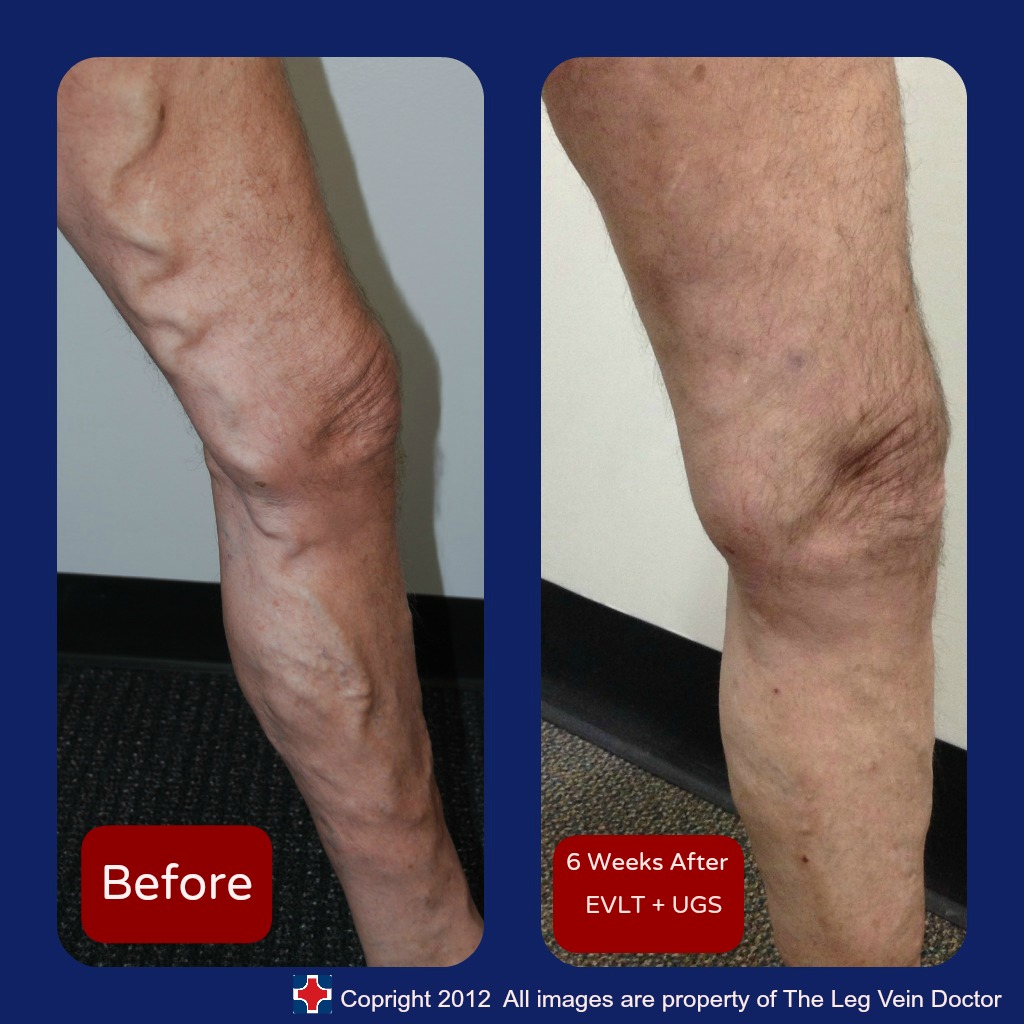Endovenous Laser Therapy (EVLT, ELA, ELT)
Endovenous Laser Therapy (EVLT) is a relatively recent advancement in the treatment of varicose veins. This technique was initially developed in the USA in the late 1990’s. Approximately 80% of patients afflicted by Varicose Veins in the USA are now being treated by EVLT instead of the traditional technique of surgical stripping. This trend is now starting to occur amongst other developed nations as well.
EVLT involves passing a very fine laser fibre-optic probe up the leg inside the vein. The probe enters the vein through a small puncture in the skin usually just above or below the knee or at the back of the calf depending on which vein is being treated. The precise frequency (1470nm) emitted by the laser is set to specifically target only the tissue in the vein wall. This deliberately causes irreparable damage to the vein wall so that the body’s attempt to repair this damage results in scar tissue formation. Over the following weeks and months the treated varicose vein then eventually becomes completely replaced by a fibrous cord. In turn the redundant scar tissue which composes this fibrous cord is eventually resorbed completely by a process called apoptosis.
wall so that the body’s attempt to repair this damage results in scar tissue formation. Over the following weeks and months the treated varicose vein then eventually becomes completely replaced by a fibrous cord. In turn the redundant scar tissue which composes this fibrous cord is eventually resorbed completely by a process called apoptosis.
EVLT is now relegating surgical stripping as an obsolete procedure for several reasons. The recurrence rates of varicose veins following EVLT are lower than surgical stripping because the problem of “neovascularization” does not seem to occur. Neovascularization is a process where there appears to be a new veins growing as a result of some kind of stimulation following surgical severing of Varicose Veins. This can be a particularly severe problem when the incision is made in the groin or behind the knee. Surgical stripping involves hospitalization, a general anaesthetic, a 4-6cm incision in the skin crease of the groin or behind the knee as well as multiple smaller incisions along the whole length of the leg. Therefore there is much more discomfort as well as a more prolonged recovery time. The surgical wounds following “stripping” require post operative care and are at risk of wound infection. Surgery also poses a higher risk of damage to the lymphatics vessels, arteries and the superficial sensory nerves that supply sensation to the skin.
EVLT is an office based procedure that can normally be completed in about 60 minutes. Local anaesthetic is used and this allows patients to remain awake and immediately start walking around once treatment is completed. This means you can come in for treatment by yourself and following your walk, you can either drive home or go onto work.
The discomfort following EVLT is usually minor and frequently patients do not require any pain relieving medication at all. Occasionally there can be moderate discomfort so we always provide a prescription for analgesia in case you might require it.
EVLT is now the preferred method for removing large varicose veins. Very tortuous varicose veins are not very suitable for treatment with "Laser" because the fibre is not easily passed around the corners of these types of veins.
EVLT won't abolish varicose veins tributaries below the knee. However, a great benefit of EVLT is that these distal vessels which can often be huge, will rapidly deflate because the source of pressure has been removed. These varicose veins distal to the end point of laser treatment also require removal as they are diseased and will continue to cause problems for the venous circulation. These varicose veins below the knee are often the "problem veins" which first prompt patients to visit their doctor in the first place. Ultrasound guided sclerotherapy is the most common method of removing these distal veins.





